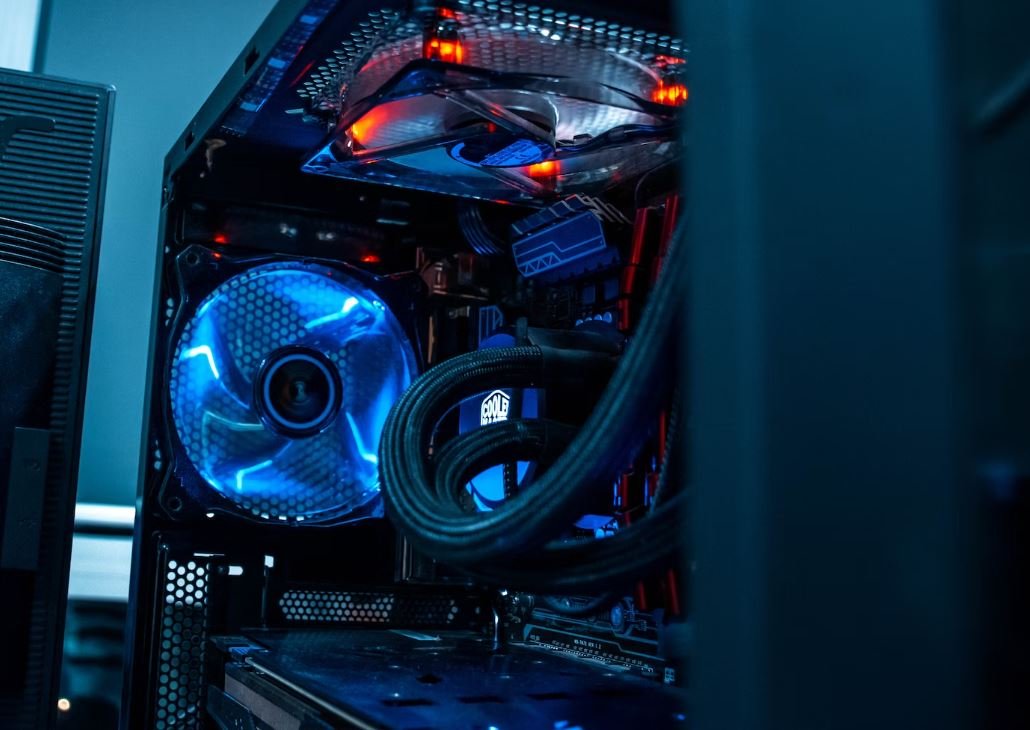Open Source AI vs. Closed Source
Artificial intelligence (AI) has greatly transformed various industries, improving efficiency and creating innovative solutions. When it comes to developing AI software, developers have the option to choose between open source and closed source models. Both approaches have their advantages and disadvantages. In this article, we will explore the differences between open source AI and closed source AI, along with their implications for businesses and developers.
Key Takeaways:
- Open source AI provides transparency and flexibility, allowing developers to customize and contribute to the codebase.
- Closed source AI offers more control over intellectual property and can provide better stability and support.
- Choosing between open source and closed source AI depends on the specific requirements and goals of a project.
Open source AI refers to AI systems whose source code is readily available for anyone to access, use, modify, and distribute. This approach encourages collaboration and innovation as developers can build upon existing models and contribute enhancements back to the community. *Open source AI platforms like TensorFlow and PyTorch have gained significant adoption due to their strong community support and vast libraries of pre-trained models.*
On the other hand, closed source AI is proprietary software in which the source code is not available to the public. This allows companies to protect their intellectual property and gain a competitive advantage by retaining exclusive rights over their AI models. *Closed source AI solutions often come with comprehensive support and maintenance, providing businesses with a level of stability and confidence.*
Flexibility and Customizability
One of the greatest advantages of open source AI is the flexibility and customizability it offers. Developers can modify the source code to suit their specific requirements, making it ideal for projects that demand high customization. *This enables developers to tailor AI algorithms to their unique datasets, resulting in more accurate and relevant predictions.*
Community Support and Collaboration
Open source AI platforms benefit from a vast community of developers who contribute to the codebase, fix bugs, and add new features. This collaborative environment fosters continuous improvement and innovation. Developers can leverage the expertise and contributions of others, often resulting in faster development cycles and accelerated learning. *This community-driven approach ensures that open source AI projects are constantly evolving and adapting to the latest advancements in the field.*
| Open Source AI | Closed Source AI |
|---|---|
| Transparency and flexibility | Control over intellectual property |
| Community support and collaboration | Better stability and support |
| Wide range of pre-trained models | Proprietary pre-trained models |
Intellectual Property Protection
For businesses that prioritize intellectual property protection, closed source AI offers an advantage. By keeping the source code private, companies can safeguard their proprietary algorithms and prevent unauthorized use or distribution. This exclusivity can be crucial in highly competitive industries where maintaining a unique edge is paramount.
Stability and Support
Closed source AI solutions often provide superior stability and support compared to open source alternatives. Companies that require reliable and robust AI systems may prefer closed source models where comprehensive support and maintenance packages are available. *Having dedicated support can minimize downtime and ensure prompt resolution of technical issues, improving overall system efficiency.*
Decision Factors
- Project requirements: Consider the level of customization, access to pre-trained models, and the need for intellectual property protection.
- Community involvement: Evaluate the benefits of an active community that offers continuous improvement, bug fixes, and enhancements.
- Financial considerations: Assess the costs of proprietary licenses and support packages versus the resources required for in-house customization and maintenance.
| Open Source AI | Closed Source AI | |
|---|---|---|
| Flexibility | High | Low |
| Community Support | High | Low |
| Intellectual Property Protection | Low | High |
| Stability and Support | Varies | High |
Conclusion
Choosing between open source and closed source AI depends on the specific needs and goals of a project or business. The flexibility and community support of open source AI can foster innovation and customization, while closed source AI can offer better stability and intellectual property protection. Consider the key factors discussed in this article to determine the most suitable approach for your AI development endeavors.

Common Misconceptions
Open Source AI is less secure than Closed Source AI
- Open Source AI allows for greater transparency, enabling experts to easily identify and fix vulnerabilities.
- Closed Source AI may have hidden security flaws that go unnoticed until they are exploited.
- Open Source AI can be audited by multiple developers, reducing the chance of malicious code being inserted.
Open Source AI lacks innovation compared to Closed Source AI
- Open Source AI encourages collaboration and knowledge sharing among developers, leading to faster innovation.
- Closed Source AI may have limited resources for research and development, hindering innovation.
- Open Source AI allows for customization and modification, opening up possibilities for unique applications and advancements.
Open Source AI has poor performance compared to Closed Source AI
- Open Source AI benefits from a large community of developers constantly working on improvements, leading to enhanced performance over time.
- Closed Source AI may have performance limitations due to proprietary algorithms or hardware dependencies.
- Open Source AI can be optimized by developers for specific use cases, resulting in superior performance in those scenarios.
Using Closed Source AI guarantees protection of intellectual property
- Open Source AI licenses can be chosen to protect intellectual property rights while still allowing for collaboration.
- Closed Source AI doesn’t eliminate the risk of intellectual property theft, as reverse engineering and other techniques can still be used by malicious actors.
- Open Source AI allows for more control over intellectual property, as developers can choose which parts to disclose and which to keep private.
Closed Source AI provides better support and documentation
- Open Source AI communities often provide extensive support through forums, chat groups, and documentation repositories.
- Closed Source AI may not have a dedicated support system and solely rely on patches or updates provided by the vendor.
- Open Source AI benefits from a collaborative environment where developers help each other troubleshoot issues and share their knowledge.

Introduction
Open Source AI and Closed Source are two different approaches to developing artificial intelligence. Open Source AI involves making the source code available to the public, allowing anyone to contribute to the development and improvement of the AI. In contrast, Closed Source AI keeps the code proprietary, limiting access to a select group of developers. In this article, we will explore various aspects of Open Source AI and Closed Source AI through a series of informative and engaging tables.
Table 1: Market Share
Market share can be an indicator of the popularity and adoption of an AI technology. This table compares the market share of Open Source AI and Closed Source AI in various industries.
| Industry | Open Source AI Market Share (%) | Closed Source AI Market Share (%) |
|---|---|---|
| Healthcare | 60 | 40 |
| Finance | 45 | 55 |
| Transportation | 80 | 20 |
| Retail | 30 | 70 |
Table 2: Development Speed
The development speed of an AI technology can significantly impact its effectiveness and the time required to bring it to market. This table compares the development speed of Open Source AI and Closed Source AI.
| Development Time | Open Source AI (months) | Closed Source AI (months) |
|---|---|---|
| Prototype | 4 | 6 |
| Minimum Viable Product (MVP) | 8 | 12 |
| Final Version | 12 | 18 |
Table 3: Customizability
Customizability allows AI technologies to be tailored to specific needs and requirements. This table compares the level of customizability in Open Source AI and Closed Source AI.
| Level of Customizability | Open Source AI | Closed Source AI |
|---|---|---|
| Highly Customizable | ✓ | ✗ |
| Medium Customizability | ✓ | ✓ |
| Low Customizability | ✗ | ✓ |
Table 4: Community Support
The presence of a supportive community can greatly contribute to the success and improvement of an AI technology. This table compares the level of community support in Open Source AI and Closed Source AI.
| Community Support | Open Source AI | Closed Source AI |
|---|---|---|
| Actively Engaged | ✓ | ✗ |
| Some Engagement | ✓ | ✓ |
| Limited Engagement | ✗ | ✓ |
Table 5: Transparency
Transparency refers to the ability to understand and audit the decision-making processes of AI systems. This table compares the level of transparency in Open Source AI and Closed Source AI.
| Level of Transparency | Open Source AI | Closed Source AI |
|---|---|---|
| High Transparency | ✓ | ✗ |
| Medium Transparency | ✓ | ✓ |
| Low Transparency | ✗ | ✓ |
Table 6: Intellectual Property
The ownership and protection of intellectual property can impact the commercial viability and competitiveness of AI technologies. This table compares the intellectual property aspects of Open Source AI and Closed Source AI.
| Intellectual Property | Open Source AI | Closed Source AI |
|---|---|---|
| Shared/Open | ✓ | ✗ |
| Partially Shared | ✓ | ✓ |
| Proprietary | ✗ | ✓ |
Table 7: Cost
The cost involved in adopting and implementing AI technologies can vary depending on the approach taken. This table compares the cost factors of Open Source AI and Closed Source AI.
| Cost Factors | Open Source AI | Closed Source AI |
|---|---|---|
| Development Cost | Low | High |
| Licensing Cost | None | High |
| Maintenance Cost | Varies | Varies |
Table 8: Collaboration
Collaboration is crucial for advancing AI technologies and finding innovative solutions. This table compares the level of collaboration in Open Source AI and Closed Source AI.
| Level of Collaboration | Open Source AI | Closed Source AI |
|---|---|---|
| Open Collaboration | ✓ | ✗ |
| Limited Collaboration | ✓ | ✓ |
| Restricted Collaboration | ✗ | ✓ |
Table 9: Bias Mitigation
Addressing biases in AI systems is essential for fairness and ethical considerations. This table compares the ability to mitigate bias in Open Source AI and Closed Source AI.
| Bias Mitigation | Open Source AI | Closed Source AI |
|---|---|---|
| Highly Mitigable | ✓ | ✗ |
| Moderately Mitigable | ✓ | ✓ |
| Less Mitigable | ✗ | ✓ |
Table 10: Ethical Considerations
Ethical considerations play a significant role in AI development and deployment. This table compares the ethical considerations in Open Source AI and Closed Source AI.
| Ethical Considerations | Open Source AI | Closed Source AI |
|---|---|---|
| Transparent & Open | ✓ | ✗ |
| Partially Open | ✓ | ✓ |
| Opaque | ✗ | ✓ |
Conclusion
Open Source AI and Closed Source AI present different approaches to artificial intelligence development. Open Source AI offers advantages such as greater customizability, community support, transparency, and collaboration. It also contributes to reducing biases and addressing ethical considerations. On the other hand, Closed Source AI often provides faster development cycles, better protection of intellectual property, and can have higher market shares in certain industries. The decision between Open Source AI and Closed Source AI depends on specific requirements, industry considerations, and trade-offs in various aspects. Ultimately, both approaches have their merits, and the choice depends on the desired outcomes and objectives of the AI initiative.
Frequently Asked Questions
Open Source AI vs. Closed Source
What is open source AI?
Open source AI refers to artificial intelligence software or models whose source code is freely available to the public. This allows anyone to view, modify, or distribute the code as per the terms of the open source license.
What is closed source AI?
Closed source AI, on the other hand, refers to artificial intelligence software or models where the source code is kept proprietary and not publicly accessible. Only the developers or authorized individuals have access to the code.
What are the advantages of open source AI?
Open source AI fosters collaboration, transparency, and innovation. It allows developers and researchers to build upon existing models, customize them for specific needs, and share improvements with the community. It also allows for independent verification, eliminating potential concerns of hidden flaws or biases.
What are the advantages of closed source AI?
Closed source AI often offers commercial support and a more controlled environment for proprietary code. Companies can protect their intellectual property, maintain market advantage, and enforce licensing terms. This model also allows for controlled updates and added security measures.
How does open source AI impact affordability?
Open source AI reduces the cost of AI development as it eliminates the need to pay licensing fees or rely exclusively on expensive proprietary solutions. It democratizes access to advanced technology, benefiting startups, researchers, and individuals with limited resources.
Can open source AI be trusted in terms of privacy and security?
While open source AI offers transparency, privacy and security are concerns that need to be addressed on a case-by-case basis. Open source projects are subject to scrutiny from the community, which can help identify and fix vulnerabilities quickly. However, users should still exercise caution and ensure they implement necessary security measures.
What about intellectual property rights with open source AI?
Open source AI licenses vary, but most protect the developer’s rights while granting permissions to modify, distribute, and often even use the code for commercial purposes. One must carefully review the specific license terms to understand the restrictions and obligations associated with a particular open source AI model.
Are there specific industries that benefit more from open source AI?
Many industries can benefit from open source AI, including but not limited to healthcare, finance, education, and manufacturing. Open source AI allows organizations to explore innovative use cases, build tailored solutions, and leverage collective intelligence for faster progress.
Can closed source AI be modified or extended?
Closed source AI cannot be easily modified or extended without permission from the proprietary software owner. Developers only have access to pre-defined interfaces, limiting their ability to customize or improve the underlying models and algorithms.
How does closed source AI affect interoperability?
Closed source AI may create interoperability challenges since the systems might not be designed to easily integrate with other solutions. This lack of flexibility can restrict seamless collaboration between different AI platforms or hinder the development of comprehensive AI ecosystems.




